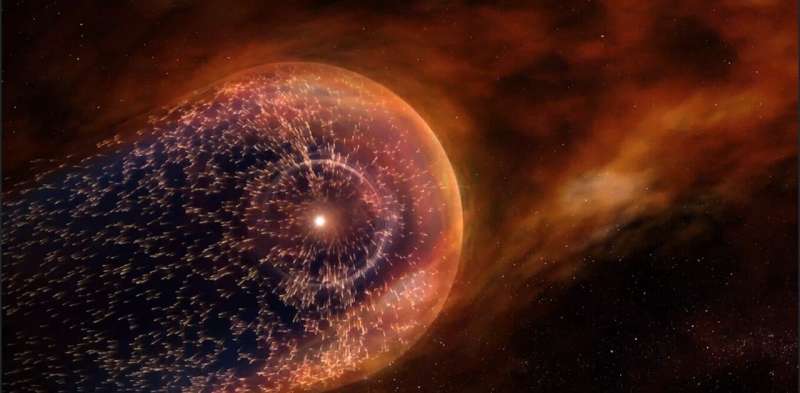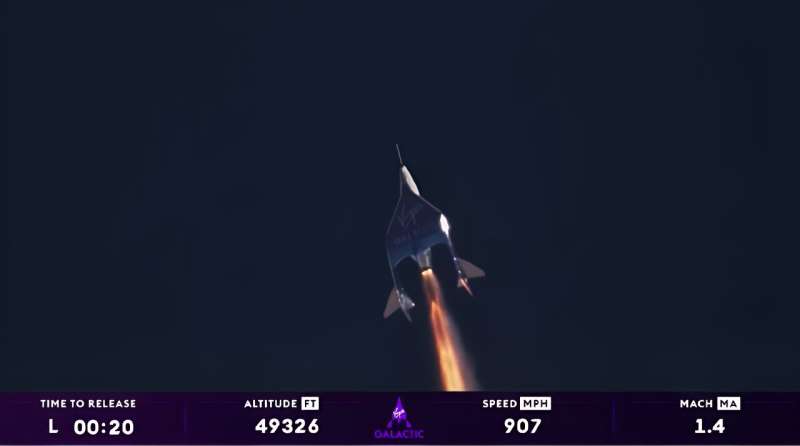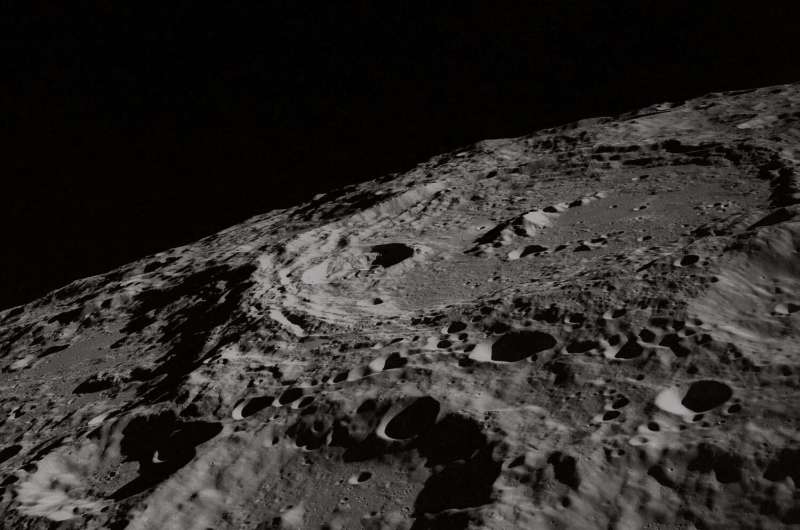Artificial gravity space stations in development for Europe
Sunday, 09 June 2024 03:41 Many are familiar with movies like "2001: A Space Odyssey" and "Star Trek," where astronauts live and work on space stations with artificial gravity. This science fiction is becoming reality.
ESA Director General Josef Aschbacher and Vast CEO Max Haot signed a Memorandum of Understanding for future Vast space stations during Space Day at the Berlin International Airshow (ILA) on June 6, 20
Many are familiar with movies like "2001: A Space Odyssey" and "Star Trek," where astronauts live and work on space stations with artificial gravity. This science fiction is becoming reality.
ESA Director General Josef Aschbacher and Vast CEO Max Haot signed a Memorandum of Understanding for future Vast space stations during Space Day at the Berlin International Airshow (ILA) on June 6, 20 UAH Research Suggests Gravity Without Mass Could Eliminate Need for Dark Matter
Sunday, 09 June 2024 03:41 Dark matter, hypothesized to explain gravitational effects that general relativity cannot, remains enigmatic since its proposal in 1932 by Dutch astronomer Jan Oort. Dr. Richard Lieu from The University of Alabama in Huntsville (UAH) has published a paper in the Monthly Notices of the Royal Astronomical Society proposing an alternative theory. Lieu's work suggests gravity can exist without mass,
Dark matter, hypothesized to explain gravitational effects that general relativity cannot, remains enigmatic since its proposal in 1932 by Dutch astronomer Jan Oort. Dr. Richard Lieu from The University of Alabama in Huntsville (UAH) has published a paper in the Monthly Notices of the Royal Astronomical Society proposing an alternative theory. Lieu's work suggests gravity can exist without mass, Virgin Galactic conducts final VSS Unity commercial suborbital spaceflight
Saturday, 08 June 2024 16:01

NASA considering an interstellar probe to study the heliosphere, the region of space influenced by the sun
Saturday, 08 June 2024 09:50

The sun warms the Earth, making it habitable for people and animals. But that's not all it does, and it affects a much larger area of space. The heliosphere, the area of space influenced by the sun, is over a hundred times larger than the distance from the sun to the Earth.
The sun is a star that constantly emits a steady stream of plasma—highly energized ionized gas—called the solar wind. In addition to the constant solar wind, the sun also occasionally releases eruptions of plasma called coronal mass ejections, which can contribute to the aurora, and bursts of light and energy, called flares.
Former astronaut William Anders, who took iconic Earthrise photo, killed in Washington plane crash
Saturday, 08 June 2024 08:57

Virgin Galactic set for final spaceflight before two-year pause
Saturday, 08 June 2024 08:55
Virgin Galactic is poised on Saturday for its last spaceflight before heading into a two-year pause on commercial operations to upgrade its fleet, as the company seeks to finally turn a profit.
The "Galactic 07" mission is scheduled to begin at around 8:30 am Mountain Time (1430 GMT) from the company's base in Spaceport, New Mexico, a spokesman said.
Scientists record Earth's radio waves from the Moon
Friday, 07 June 2024 17:54
On Feb. 22, a lunar lander named Odysseus touched down near the Moon's South Pole and popped out four antennas to record radio waves around the surface—a moment University of Colorado Boulder astrophysicist Jack Burns hails as the "dawn of radio astronomy from the Moon."
It was a major achievement for the tenacious lander, which was built by the Houston-based company Intuitive Machines and had to overcome a series of technical difficulties to make it to the lunar surface. Burns is co-investigator on the radio experiment that flew aboard Odysseus called Radio wave Observations at the Lunar Surface of the photo Electron Sheath (ROLSES).
He'll give an update on the ROLSES data, and will share what's in store for future radio astronomy from the Moon, this week at the 244th Meeting of the American Astronomical Society in Madison, Wisconsin.
"It was heroic for Intuitive Machines to land under these conditions, and to deploy our antennas, take some data and get that data back to Earth," said Burns, professor emeritus in the Department of Astrophysical and Planetary Sciences at CU Boulder.
Space Force agency taps 20 companies for $1 billion ground systems IDIQ
Friday, 07 June 2024 17:36

SENER’s SIROM system interconnect testing in ESA’s ORL
Friday, 07 June 2024 14:11 Video:
00:01:51
Video:
00:01:51
SENER is testing the docking capabilities of the SIROM system by launching the MANTIS floating platform into an equally free-floating REACSA at ESA's Orbital Robotics Laboratory. This free-floating tests simulate the dynamics of rigid body contact and present an opportunity to gather valuable insights into the performance of SIROM in approximately 200 docking scenarios.
ESA and Vast to study cooperation on future commercial space stations
Friday, 07 June 2024 13:28







 Image:
Ariane 6 fairing closure
Image:
Ariane 6 fairing closure 
